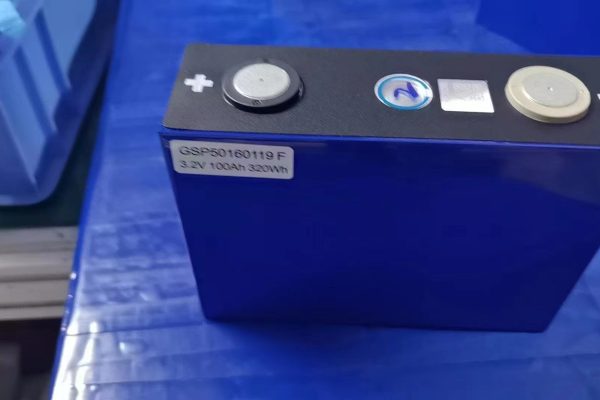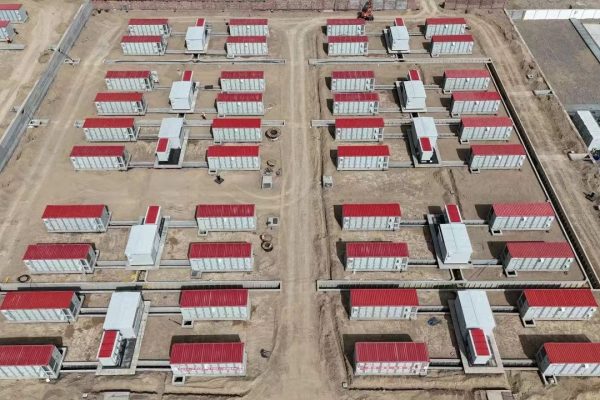Ensuring Safe, Efficient, and Scalable Operation in Modern Energy Storage
In today’s smart energy ecosystem, everything talks to everything — or at least, it should.
From solar inverters and battery management systems (BMS) to energy management systems (EMS) and EV chargers, every component in a hybrid or grid-tied energy system relies on digital communication to share real-time data and coordinate operation.
When these devices don’t speak the same language, the result isn’t just data loss — it can cause charging inefficiency, system instability, and even battery damage.
This is why communication protocol compatibility has become one of the most critical factors in designing, installing, and maintaining modern energy systems.
What Are Communication Protocols in Energy Systems?
A communication protocol is a standardized digital language that allows two or more devices to exchange data reliably and efficiently.
In energy systems, communication protocols enable:
- Battery and inverter coordination
- Power flow control and safety checks
- Monitoring via smart meters or cloud platforms
- Integration with home automation or grid management systems
Common Protocols Used Today
| Protocol | Type | Typical Application | Notes |
|---|---|---|---|
| RS485 / Modbus RTU | Serial | BMS ↔ Inverter | Widely used in industrial communication; robust and simple |
| CAN Bus | Serial | EV batteries, advanced BMS | High-speed, real-time communication with error correction |
| Modbus TCP / Ethernet | IP-based | EMS ↔ Cloud / Data logging | For remote monitoring and smart control |
| Wi-Fi / MQTT / TCP-IP | Wireless | IoT-based systems | Enables remote management and firmware updates |
| Proprietary Protocols (e.g., Pylontech, BYD) | Custom | Specific brand ecosystems | Require matched firmware and ID mapping |
In essence, communication protocols define how devices exchange voltage, current, temperature, SOC (state of charge), and alarms — all essential for stable operation.
Why Protocol Compatibility Is Critical
1. Safe Battery Charging and Protection
The most crucial reason for communication compatibility is safety.
Batteries — especially lithium-ion — require precise charge/discharge control.
Without proper communication between the BMS and the inverter, the system cannot accurately:
- Detect battery temperature
- Limit charge current
- Stop charging when fully charged
- Trigger over-voltage or under-voltage protections
When incompatible, inverters default to generic voltage-based charging, which can lead to:
- Overcharging → thermal runaway risk
- Deep discharging → capacity loss
- Reduced cycle life → shorter battery lifespan
✅ Example:
A 48 V LiFePO₄ battery should be charged at 56.0 V max, with current limit around 0.5–1C depending on cell type.
Without protocol communication, the inverter may overshoot these values — silently reducing longevity.
2. Optimized Efficiency and Energy Flow
In a well-matched system, communication protocols allow dynamic adjustment of current and voltage based on system conditions.
For instance:
- During solar overproduction, the inverter can slow down charging or feed excess power to the grid.
- During grid outages, the system can switch to island mode instantly and maintain battery SOC safely.
If communication fails, the inverter operates “blindly,” relying on static voltage cutoffs — leading to lower round-trip efficiency (up to 10–15% loss) and potential energy waste.
⚙️ With Modbus or CAN-enabled communication, real-time data exchange can maintain inverter–battery efficiency above 94–96%, compared to <85% for voltage-only systems.
3. Accurate Monitoring and Diagnostics
Communication protocols also power data transparency — showing users real-time information on:
- Battery SOC, SOH (state of health)
- Charging/discharging power
- Temperature and current trends
- Fault alarms (overvoltage, imbalance, etc.)
Without protocol-level data, your energy dashboard only shows “battery voltage” — which is not a reliable indicator of SOC in lithium batteries.
Example:
At 52.5 V, a LiFePO₄ battery could be anywhere from 30% to 80% charged, depending on load and temperature.
With BMS communication, the system reports exact SOC = 67%, ensuring accurate power management.
4. System Scalability and Multi-Brand Integration
As homes and businesses expand their systems — adding more batteries, PV arrays, or hybrid inverters — communication compatibility becomes a make-or-break factor.
If protocols differ (e.g., one device uses CAN while another uses RS485), the system may:
- Fail to synchronize SOC across parallel batteries
- Lose current balancing between stacks
- Reject firmware updates or EMS control commands
This limits scalability and vendor flexibility, locking you into specific ecosystems.
✅ Real-world example:
Pylontech batteries use RS485 (Modbus) and CAN protocols.
They’re fully compatible with brands like Growatt, Victron, Deye, and Solis, but only when correct protocol mapping (ID codes) is set.
Incorrect mapping can cause “Battery Communication Failure” — disabling smart charging and voiding warranties.
5. Grid Compliance and Energy Management Integration
In grid-tied systems, communication extends beyond the battery and inverter.
It’s also essential for:
- Grid frequency regulation
- Demand response
- Smart metering
- Virtual Power Plant (VPP) participation
Utilities require standard communication (e.g., IEC 61850, SunSpec, or Modbus TCP) for safe, synchronized grid behavior.
If your inverter can’t speak the same language as the utility or EMS, it cannot join the grid network — blocking access to feed-in tariffs, net metering, or grid services.
Open vs. Proprietary Protocols
Open Protocols (e.g., Modbus, CANopen)
- Publicly documented
- Supported by most inverter and BMS manufacturers
- Easier to integrate in mixed-brand systems
- Encourage interoperability
Proprietary Protocols (e.g., BYD, Tesla, Huawei)
- Closed design, optimized for brand ecosystem
- Offer deep data access and advanced control
- Typically locked to specific inverters or BMS models
🧠 Tip: If long-term flexibility is important, choose equipment supporting open communication standards or multi-protocol firmware.
How to Check Protocol Compatibility Before Installation
Before buying or connecting any inverter–battery pair, always verify:
- Supported Protocols
- Check both datasheets (inverter and battery) for supported types — e.g., CAN 500 kbps, RS485 Modbus.
- Wiring Pinout and Baud Rate
- RS485 and CAN use different pins and communication speeds; mismatching causes silent data loss.
- Firmware Version
- Many manufacturers update protocol compatibility via firmware (e.g., “V1.11 adds Pylontech RS485 support”).
- Integration Lists
- Major brands publish “Compatible Battery Lists” — confirm your model and firmware match exactly.
- Commissioning Tools
- Use vendor-specific software (e.g., Victron VEConfigure, Deye Assistant, SolisCloud) to check live protocol handshakes.
Consequences of Ignoring Compatibility
| Issue | Symptom | Potential Impact |
|---|---|---|
| Wrong or no protocol | “Battery communication failure” | Inverter reverts to fixed voltage charging |
| Partial handshake | SOC mismatch | Reduced usable capacity |
| No CAN/RS485 link | No temperature data | Overheating risk |
| Vendor lock-in | Can’t add new batteries | Scalability loss |
| No EMS link | Inflexible grid control | Efficiency drop, revenue loss |
A small oversight in communication setup can cost hundreds of cycles in battery life or even trigger safety alarms in hybrid systems.
Future of Communication in Energy Systems
The industry is rapidly moving toward standardized, intelligent communication frameworks such as:
- SunSpec Modbus – for inverter–battery interoperability
- OpenADR / OCPP – for grid and EV integration
- IEC 61850 – for smart grid automation
- MQTT / REST APIs – for IoT and cloud monitoring
These protocols aim to make energy systems plug-and-play, ensuring future devices can connect without manual configuration.
🌍 In the near future, we can expect full interoperability where a new battery, regardless of brand, can be detected and optimized by the inverter automatically — similar to USB plug-and-play on computers.
Communication protocol compatibility is not a luxury — it’s a necessity for any modern energy system.
It ensures:
- Safe and efficient battery management
- Optimized charge/discharge cycles
- Accurate monitoring and diagnostics
- Long-term scalability and grid integration
As solar, storage, and EV technologies continue to converge, the future of clean energy depends on devices that can talk, learn, and cooperate seamlessly.
When designing your next energy system, don’t just match voltages and capacities — match the languages your devices speak.
Because in the world of intelligent energy, communication is power.









